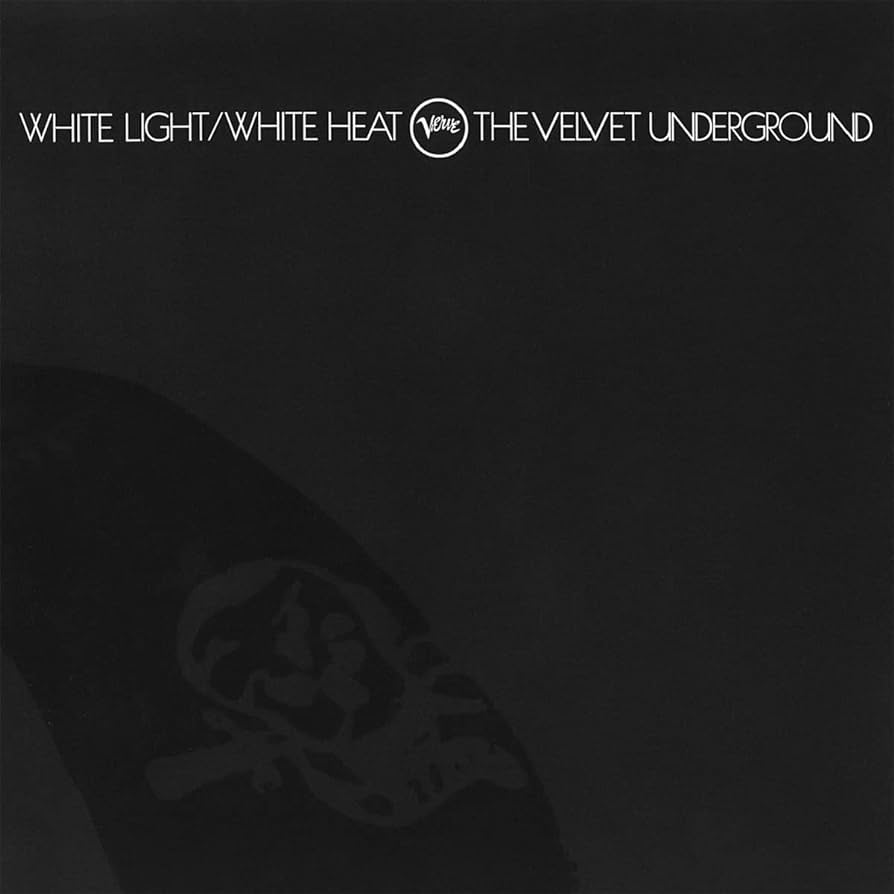
In 1968, the Velvet Underground went through a period of profound transition, marked by the departure of John Cale, who was replaced by Doug Yule, reflecting a change in the band's dynamic and sound.
That year they released ‘White Light/White Heat', an album that pushed the boundaries of what was then considered acceptable in popular music. The record was loud, raw and uncompromising, reflecting a raw honesty in songs like ‘Sister Ray'. Lou Reed once said: “We gave underground culture an everyday voice. We were the last shovelful to dig up the madness.”
The band's live shows were also remarkable. In 1968 the Velvet Underground played with the volume so loud that some audience members reported feeling the music “physically”. Reed often recounted how the music was not just sound, but a complete bodily experience for them and their audience.
The White Light/White Heat album
“White Light/White Heat is far from an album designed to appeal to the masses; it is an uncompromising work, a raw sonic manifesto that pushed the boundaries of what rock could be in the late 60s. It embodies a period when the Velvet Underground was not just a band, but a cultural force that defined an era.
The album cover, with its ghostly image of a skull superimposed, perfectly illustrates the dark and disturbing atmosphere of the album. It was designed by Billy Name, the official photographer of Warhol's Factory, capturing a fragment of the artistic aura that surrounded the band.
The Sister Ray track
“Sister Ray”, the closing track on the Velvet Underground's “White Light/White Heat” album, is a seventeen-minute sonic fresco of brutal improvisation and electric distortion. It's a track that symbolises the apogee of the band's musical experimentation and reflects the chaos of the time.
The lyrics of ‘Sister Ray' are a surreal narrative collage, depicting an orgy of drugs, sex and violence. Lou Reed, with his straightforward, no-nonsense style of storytelling, depicts a scene of urban decadence where drag queens, drug dealers and sailors rub shoulders, all under the impassive eye of Sister Ray, an orgy machine. The picture is a metaphor for America in the late 60s, a society in the grip of excess and self-destruction.
The music on “Sister Ray” is a sonic journey where the instruments sometimes seem on the verge of disintegrating under the intensity of the playing. Reed's guitar, Sterling Morrison's bass and John Cale's organ create a hypnotic, dissonant backdrop against which Maureen Tucker pounds out a relentless rhythm. This cacophony is intentional, as the band chose to capture the performance in a single take, refusing to turn the volume down despite the pleas of the studio engineers.
The track is also famous for its minimalist production. The recording was done without overdubs or retouching, leaving every mistake, every moment of tension, every flash of raw genius intact. This raw authenticity is the heart of “Sister Ray” and symbolises the Velvet Underground's anti-commercial approach.
“Sister Ray” is not just a song, it's an aural experience that defies musical convention. It represents a period when the Velvet Underground did not seek to please, but to express a raw reality, through music that was both an art form and an act of rebellion.
Where to listen to The Velvet Underground And Nico?
- Listen to White Light/White Heat on Spotify
- Listen to White Light/White Heat on Deezer
- Listen to White Light/White Heat on Youtube